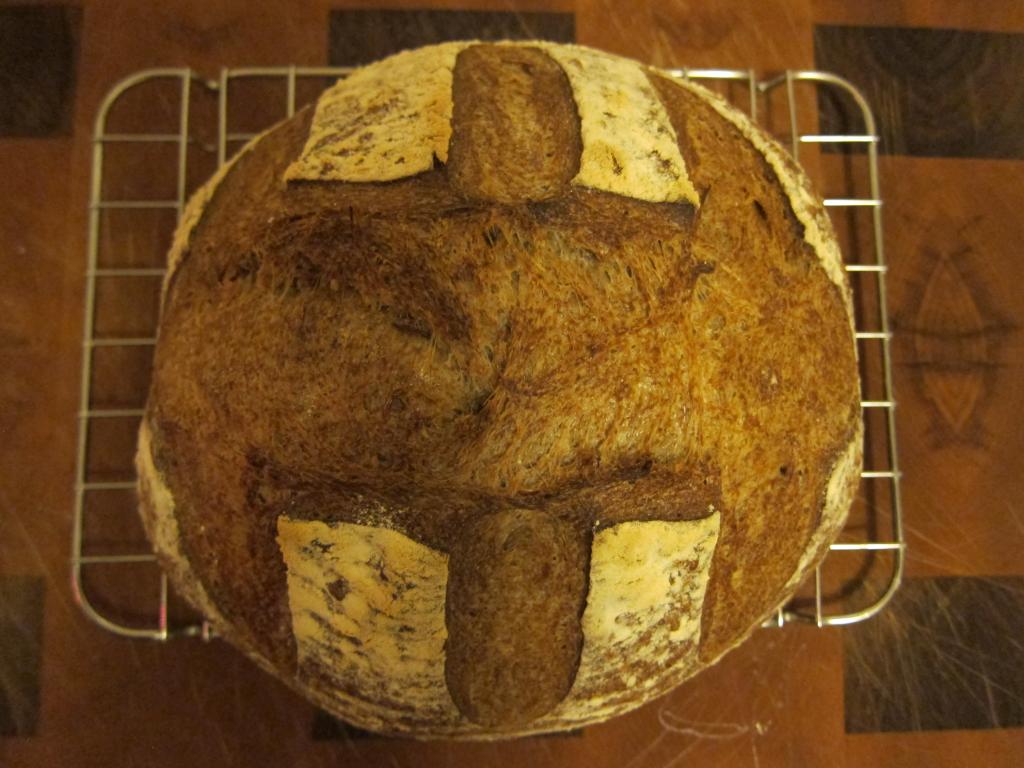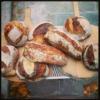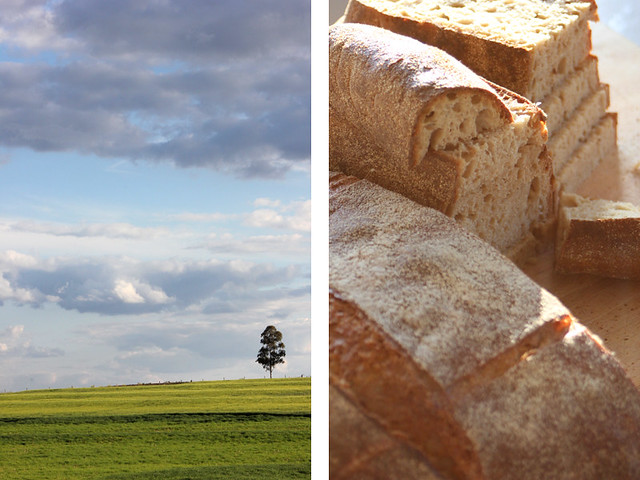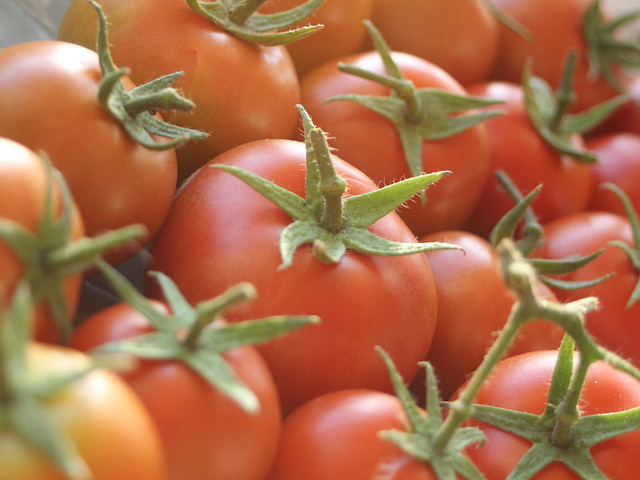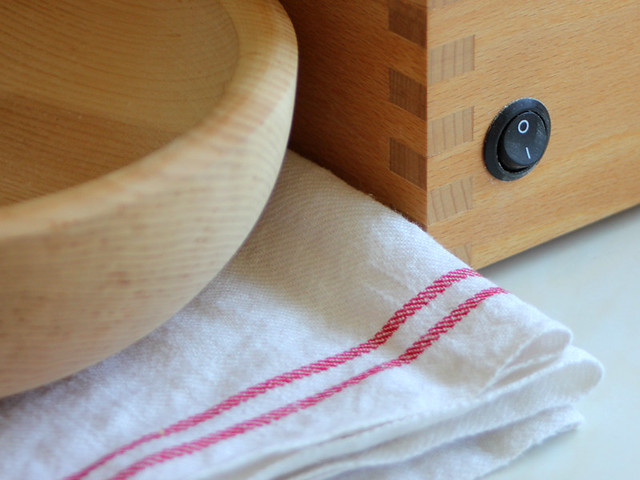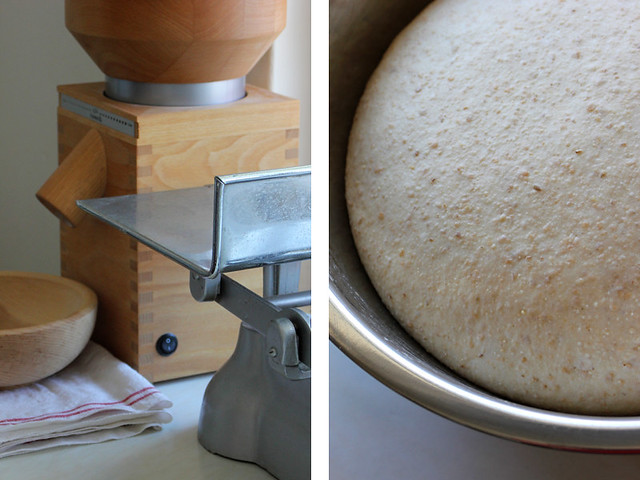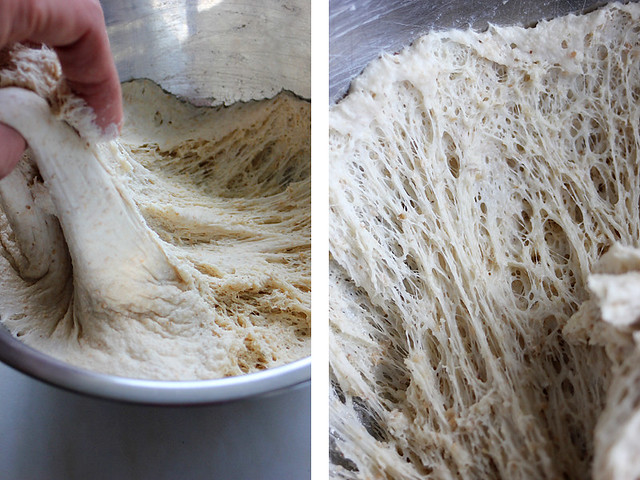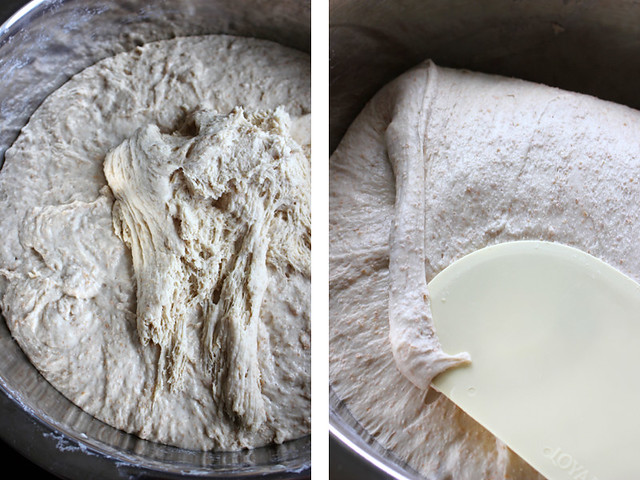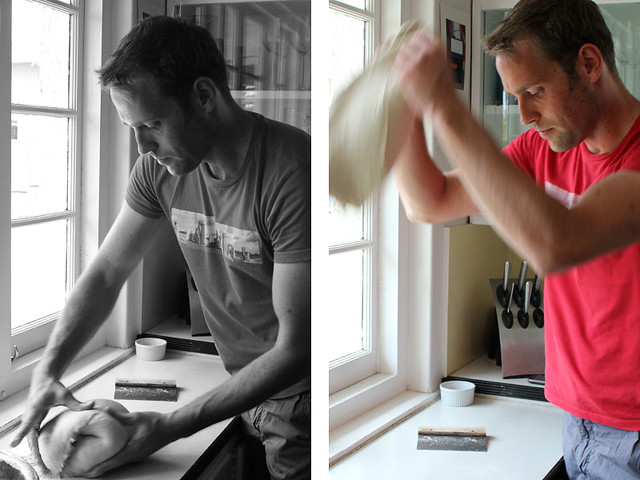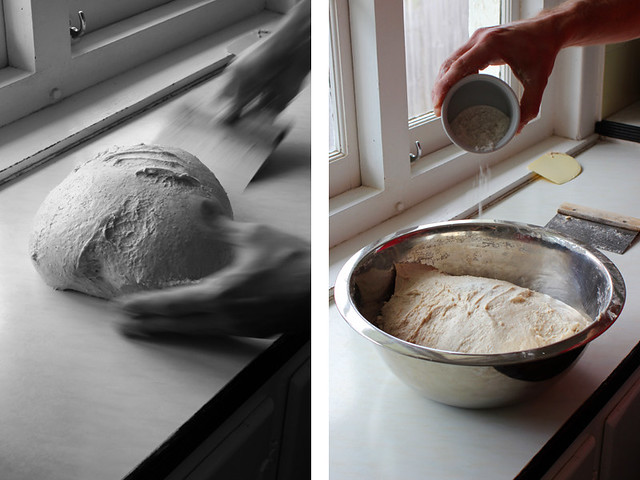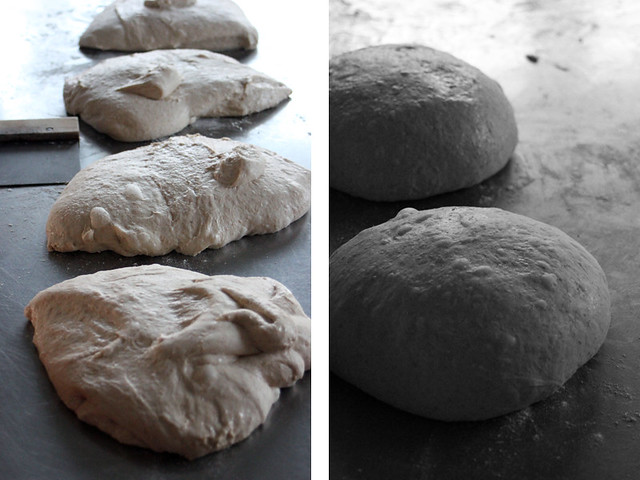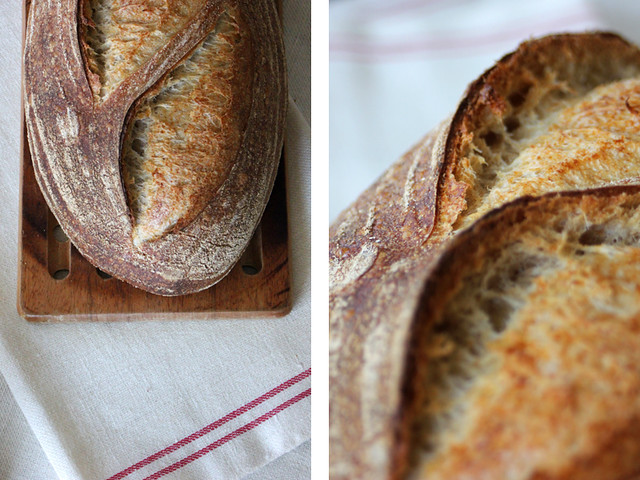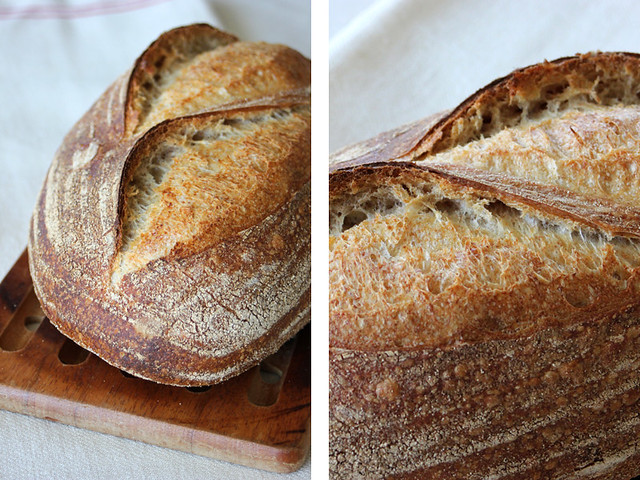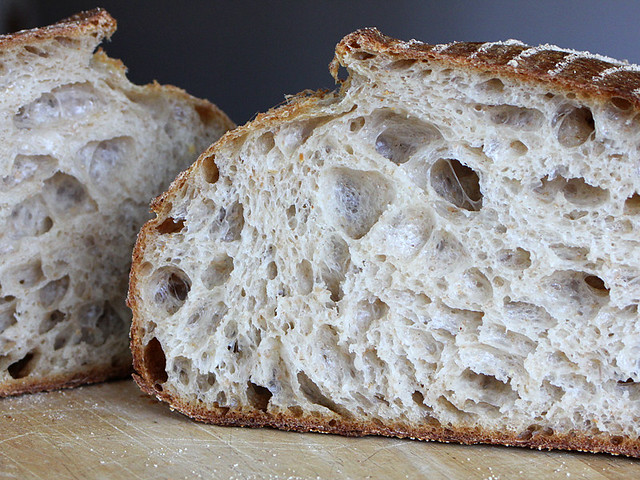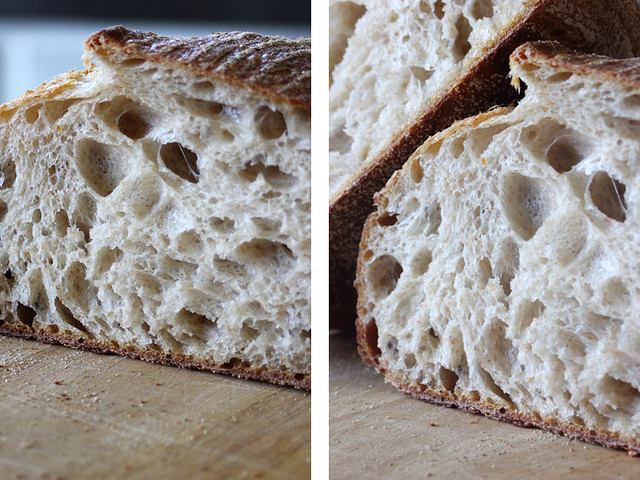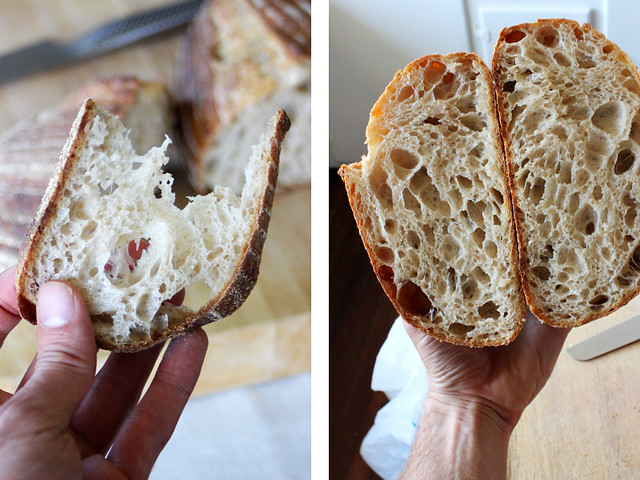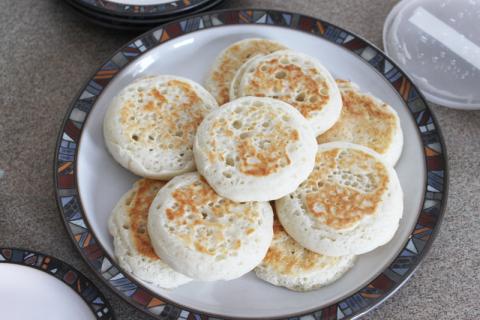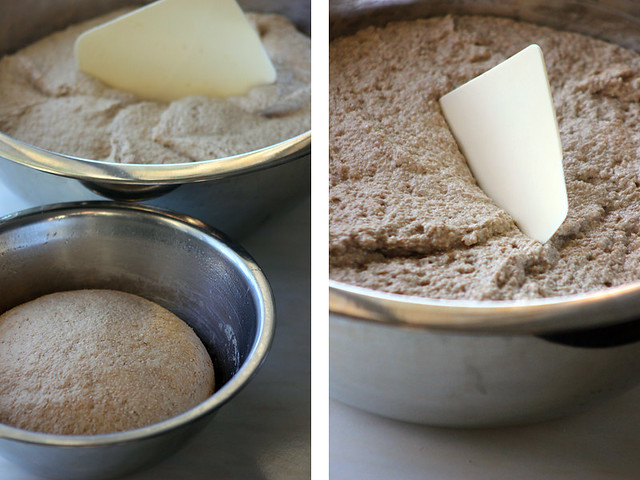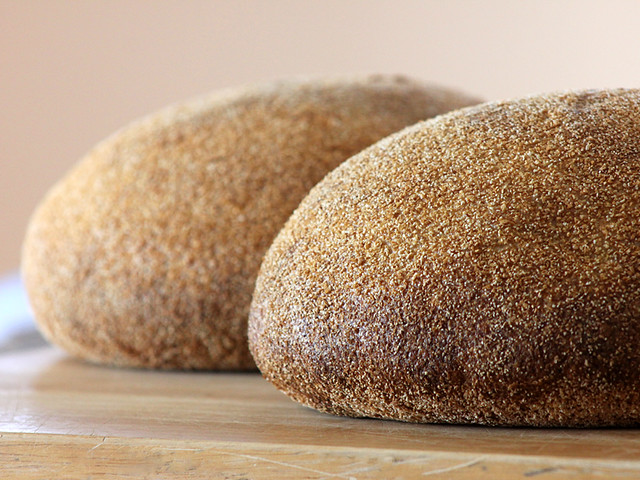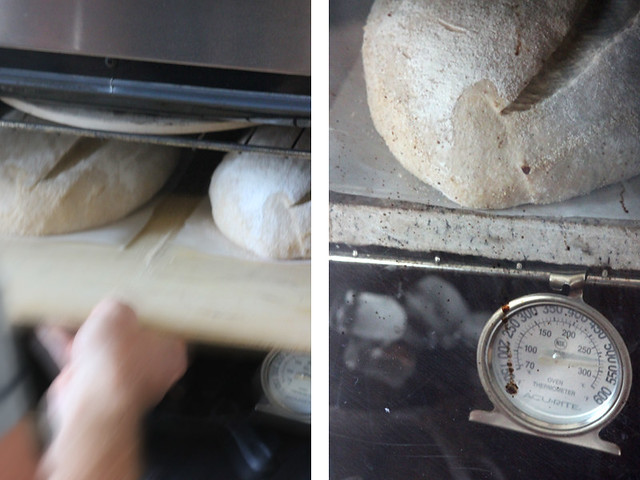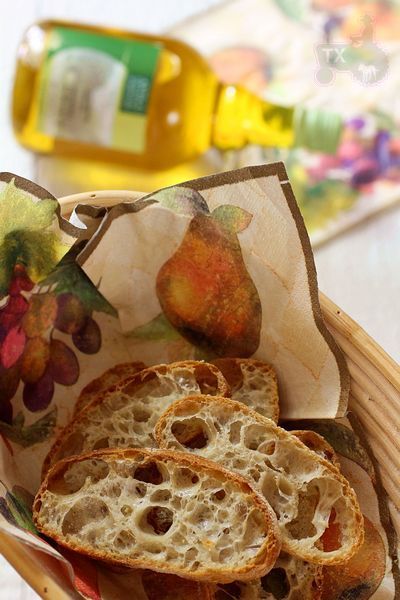Hi everyone,
First I would like to thank dabrowman for inspiring me to bake a SD loaf using beer! So thanks dabrowman!! Dude you totally rocked out these calculations, making the whole process much easier to understand.
A few things came to mind when I was browsing his "50% Whole Grain, 50% Sprouted Porter" recipe.
First how precise his recipe was. Because I'm new to this it took me a little to figure out the measurements and percentages, but when I did a whole new world opened up for me to get started on using pre-ferments.
Second was that I love a good dark beer, and what better way to have one then baked with bread.

Thought that I under proofed it by a margin. About 15 minutes. Nice bloom but as you will see it was a little exaggerated on top to the one side.

This is the exaggerated bloom I was talking about. Also I wasn't sure if I had the best seal on the bottom when I place it in the banneton.


The crumb came out super moist, tender, and was absolutely delicious!! You could totally smell and taste the stout. Especially when it came right out of the oven. OMG!! Some larger holes than I might have wanted but pretty happy over all.
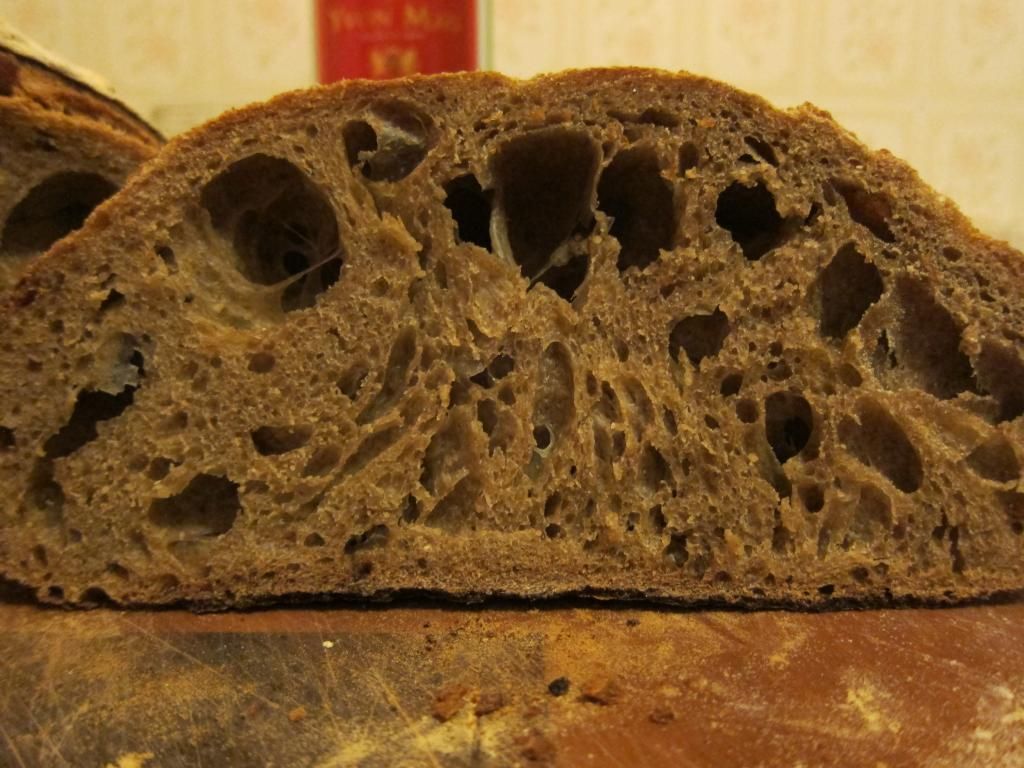

This was my first attempt at using a preferment, like a levain build. But after this I'm definitely hooked even more on sourdough and the endless possibilities.
My starter is a 50% Stone Ground Whole Grain Rye Flour, 50% bread flour set at 100% hydration.
Levain Build Build 1 Build 2 Total %
Rye Starter 30g 0g 30g 4
Red Fife 30g 60g 90g 12
Water 30g 60g 90g 12
90g 120g 210g 28%
Levain Totals
Flour 105g 14%
Water 105g 14%
Levain Hydration 100%
Levain % of total flour 14%
Dough Flour
Red Fife 45g 6%
Bread Flour 600g 80%
Total dough flour 645g 86%
Salt 15g 2%
Black Creek Stout 420g 56%
Dough Hydration 65%
Total flour w/starter 750g
Stout & water w/flour 525g
Hydration w/starter 70%
Total weight 1290g
% of Red Fife 20%
% of bread flour 80%
Build 1- 24 hours retard in fridge. First hour was room temp.
Build 2- 24 hours retard in fridge. Take out of fridge 2 hours before, to warm up. First hour after mix was room temp.
Mix dough flour and stout. Autolyse for 2 hours.
Mix levain, salt and dough together. Autolyse for 20 minutes.
Slap and fold for 3 minutes, and shape. Then perform 3 stretch and folds/shape with 20 minutes bench rests, covering with plastic wrap.
Place in glass bowl, cover with plastic wrap. 1st hour at room temp. Retard in fridge for 24 hrs. Take out of fridge 2 hours before, to warm up.
Perform 1 stretch and fold and shape. Cover with plastic wrap and bench rest for 20 minutes.
Perform 3 tension pulls and shape, with 10 minute bench rests covering with plastic wrap.
Place in banneton and proof for 1.5 hrs, or until dough is ready. I usually don't go with times anymore. Instead I go by amount of spring back. Checking every 15 minutes.
Place in pre-heated dutch oven. Bake at 500 for 20 minutes, then 425 for 20-30 minutes.
My partner Alexi says that this was the best SD loaf I had ever baked. The flavor profile, crumb and crust were so tasty. This recipe is definitely a keeper.
Cheers!








